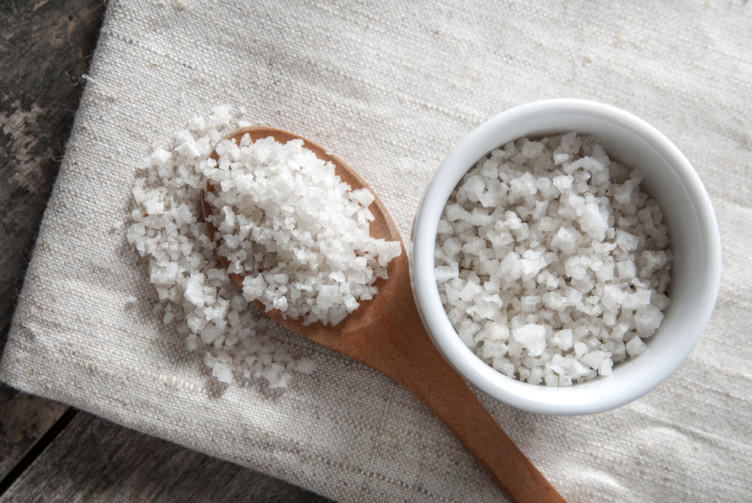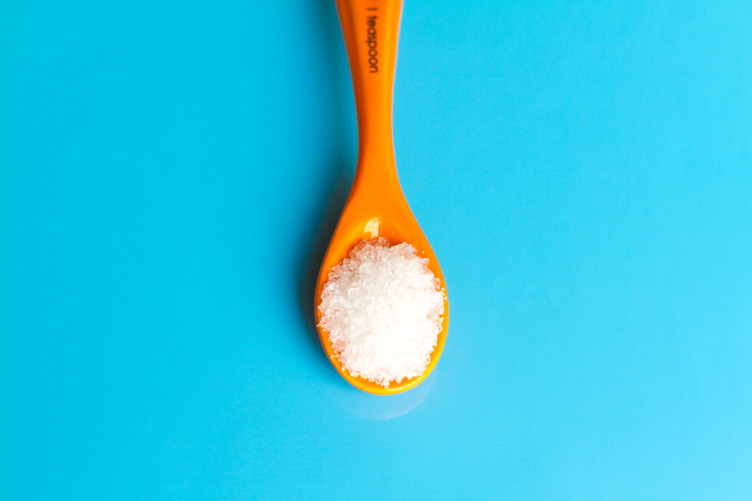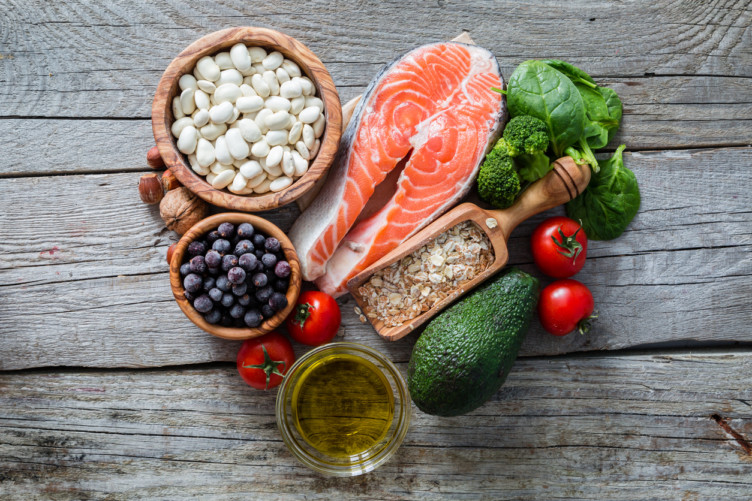How Much Salt You Should Actually Eat

- A low salt diet can be harmful.
- You may be missing out on potassium.
- Don’t fear the salt – especially if you’re on a low-carb diet.
- The kind of salt you eat matters.
Salt gets a bad rap.
The American Heart Association (AHA) says to limit your daily intake of salt to a little over half a teaspoon. More than that (they claim) puts you at risk for high blood pressure and heart disease.[1]
That’s not even enough to season a grass-fed steak, much less add flavor to a whole day’s worth of meals. Bummer.
There are a lot of reasons not to trust the AHA. So, before you resign yourself to bland food, let’s take a closer look at salt. There’s a strong argument that the world’s most popular seasoning doesn’t deserve the bashing it gets – in fact, you might want to eat more of it.

The downsides to a low-salt diet
Studies have found that eating less sodium leads to modestly lower blood pressure in people with high blood pressure.[2] But several others found restricting your sodium actually increased risk of heart disease, and a meta-analysis concluded that cutting sodium offered no benefits to your health.[3][4] On top of that, there are a few unrelated issues with a low-salt diet:
- Hypertension. According to a summary of 23 studies printed in the American Journal of Hypertension, restricting sodium to less than 2,500 milligrams per day not only causes hormone dysregulation, but it also makes your plasma renin activity go up, which increases your risk of heart attack dramatically.
- Insulin resistance. A few different studies have found that a low-salt diet triggers a 15-20% increase in insulin resistance in healthy volunteers.[5][6][7] Insulin resistance contributes to fat gain and, in the long run, type-2 diabetes and metabolic syndrome.
- Fatigue and sleep quality. One study found that curbing salt screws with your sympathetic nervous system, tanking sleep quality and causing exhaustion and faster muscle fatigue.[8] Participants also had increased blood pressure.
So what’s really going on with sodium?
Is sodium the problem…or is it potassium?
Potassium and sodium work closely together; when you get plenty of potassium in your diet, sodium stops raising blood pressure.[9][10] In fact, getting enough potassium lowers your blood pressure more than cutting out sodium does.[11][12] Surprise: 97% of Americans are potassium-deficient.[13]

In other words, you can salt your food as much as you’d like, provided you’re getting plenty of potassium. You want about 4000-5000 mg a day. Probably the cheapest and easiest option is to take a teaspoon of potassium salt substitute in water every morning. Or you can go for the whole food approach and get 5-6 daily servings of the following high-potassium foods:
- Avocado
- Cooked spinach
- Sweet potato
- Butternut squash
- Acorn squash
- Wild salmon
- Hazelnuts
- Pistachios
Get your potassium. It’s better than cutting back to half a teaspoon of salt a day.
You want extra salt on a low-carb diet
If you’re eating the Bulletproof Diet, Paleo, keto, or any other low-carb diet, you actually want to double down on salt. Here’s why.
When you eat low-carb, you produce far less insulin.[14][15] That’s part of the reason you lose weight and feel steady energy. But low, stable insulin also tells your kidneys to start excreting sodium, along with extra water you were using for your carb stores.[16] That’s why bloating goes down dramatically in the first couple weeks you’re on a low-carb diet.
Losing water weight is great. But if you aren’t replenishing all the sodium your kidneys pump out, you can end up with dehydration headaches and fatigue. In fact, low sodium intake is one of the biggest mistakes many new low-carbers make.
So if you’re on the Bulletproof Diet, season your food with abandon. Better yet, start your morning by drinking a big glass of water with 1 teaspoon of potassium salt and a 1/2-1 teaspoon of sea salt. It’ll make your kidneys happy and ease cortisol production, which can help you keep stable energy throughout the day.
How much salt should you eat?
The maximum level of sodium currently recommended by experts is 2,300 milligrams, but this research concluded that the right level of sodium for most people is between 2,500 and 6,000 milligrams per day. The constant push to lower sodium in your diet can increase stress on your adrenals and potentially cause heart attacks.
If you’re eating a diet high in quality, whole foods, you’re automatically consuming less sodium than most of the population that eats a Standard American Diet. If you’re using high-quality sea salt on already flavorful food, it’s unlikely you’ll go overboard. Salt your food to taste and don’t worry too much about it. If you’re low-carb or have adrenal or thyroid issues, up your salt intake by drinking a big glass of water with 1 teaspoon of potassium salt and a 1/2-1 teaspoon of sea salt every morning upon waking.
Salt quality matters
Before you go sprinkling table salt all over your Bulletproof beef, consider the quality!
Most high-quality sea salt or mined pink Himalayan salt naturally contains about 80 trace minerals, including potassium, calcium, magnesium, iodine, iron, and zinc, among others. Quality salt is hand-mined without explosives and tested for contamination, so you don’t have to worry about heavy metals or pollutants.
The mineral content in pink salt isn’t a huge game changer health-wise, but it’s an easy way to get some extra nutrients in your diet. The minerals and other compounds in unrefined salt also give it a more complex flavor than you get from table salt.[17]
Avoid white, refined table salt, which is processed at high temperatures, bleached, and treated with anti-caking agents so it doesn’t clump. The result is a pure sodium chloride concentrate with no other minerals to speak of.
Hope this article helps to clarify some of the misinformation out there regarding salt. Thanks for reading and have a great week.
Sign up for early access to sales, product launches, the latest Bulletproof news and more!



